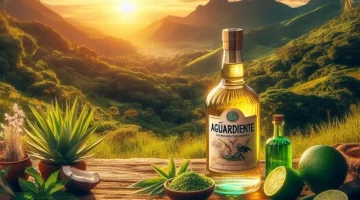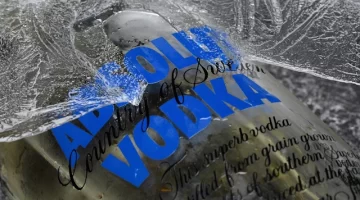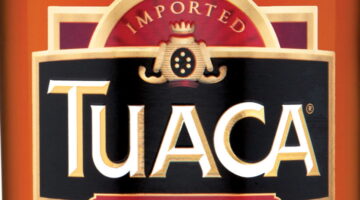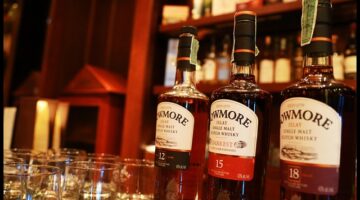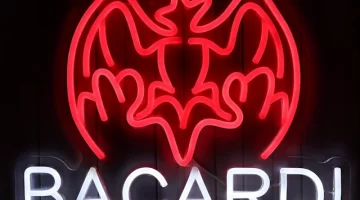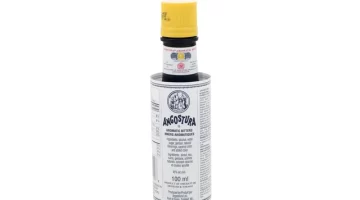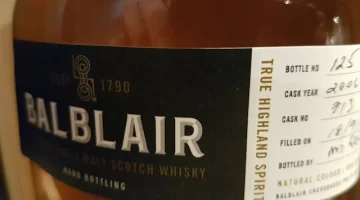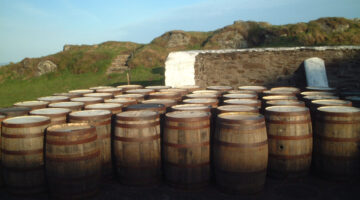Guide to Scottish Gins and Distilleries
Travel Distilled reviews The Gin Clan, an excellent new guide to Scottish gins and distilleries.
If ever a book was timely it’s The Gin Clan by Fiona Laing, a guide to Scottish gins and distilleries.
Scottish gin has been on the up and up for several years now. For example, at the Bruichladdich Distillery on Islay, who produced one of the earliest of the ‘new wave’ of Scottish gins, The Botanist, they now make more gin than whisky.

I’d actually thought that the Botanist was the very first of these new Scottish gins, but thanks to The Gin Clan I now know that wasn’t the case. The entry for each Scottish gin distillery gives the date they produced their first gin and The Botanist was released in January 2011, whereas Caorunn had come out in August 2009, Gilt Gin in 2010, and Boȅ gin as early as 2007. And that’s ignoring established brands like Hendrick’s, which seems to have been around forever, but in fact first appeared in 1999.
What is really noticeable, though, when looking through the list of distilleries is how many first produced a Scottish gin as recently as 2017 and 2018. The newest entry in the book is interesting, as it’s one of the best-known names when it comes to Scottish drinks, Crabbie’s. Crabbie’s ginger wine and beer are well-established, but will Crabbie’s gin make a similar name for itself, since it was released in December 2018?
The Botanist
As I read this very enjoyable book on my way to visit the people who make The Botanist, let’s look at their entry. Bruichladdich gets a two-page spread, as do a few others, though most distilleries get one page. As well as the name of the distillery and its gins, you get the location, website, date they released their first gin, and whether they do tours or not.

The spread has a photo of the gin or gins, and in the case of The Botanist a photo showing the distillery’s lovely waterside location. You also get a few hundred words about the distillery, its history, and its involvement with gin. It can’t have been easy writing description after description of the same basic topic, but author Fiona Laing has done a great job in making every entry entertaining and readable. But then, she is an experienced journalist so knows how to tell a good story. And with distilleries based in all kinds of places, and with all kinds of passionate people behind their gins, there are plenty of good stories to tell.
The Gin Clan
The book is far more than a simple listing of distilleries, though. It will also be an invaluable reference source for anyone interested in Scottish gin. It will probably need updating regularly, as the author points out in her introduction that in 2018, 23 distilleries went into production, with another 12 already due to start in 2019. 2018 also saw 18 new Scottish gin brands launched.
The author starts by defining her terms: what makes a gin Scottish? What qualifies someone for inclusion in what she’s termed the Gin Clan? Do you have to use solely Scottish ingredients? Well, with gin that’s simply not possible. Scotland does not have a lot of good juniper, and nor does its climate lend itself to growing swathes of lemon and orange trees. Exotic spices are a bit thin on the ground too.
The author says that if rules are applied too tightly, you’d end up with hardly any true Scottish gins at all. To qualify for her Distilling Clan, she only asked that the distilleries had a still in Scotland and used it to make gin. Everyone else who might qualify on some grounds as making a Scottish gin is featured in a separate section called Kith and Kin. She admits her classifications aren’t perfect, but they reflect the current state of the Scottish gin family, and the two groups together form the Gin Clan.
She’s right. Back to The Botanist as an example. They openly state that they buy in the base wheat spirit for their gin from a well-known English spirit provider. However, they infuse the gin with 22 botanicals that are foraged on Islay by their resident botanist, they make the gin on Islay, and they bottle it on Islay. It’s hard to argue that it isn’t a Scottish gin, and in particular an Islay gin.

Scottish Juniper
Another section of the book deals with Scotland’s natural resources, as far as they affect the making of gin, and especially the state of the juniper in Scotland. The boom in Scottish gin does mean that some distillers are planting their own juniper, aware that it is in short supply.
Scottish Tonics
One spread at the back of the book also covers the topic of Scottish tonic waters. After all, what better to put in Scottish gin than Scottish tonic? I suppose that leads to the inevitable conclusion, that this whole book is a tonic for the Scottish gin industry and an essential read for anyone remotely interested in it.
Buying This Guide to Scottish Gins
The Gin Clan by Fiona Laing is published by Great Northern Books and you can buy it on Amazon. If it fires you up, you can find a vast array of Scottish gins at Master of Malt.
Buying This Guide to Scottish Gins
The Gin Clan by Fiona Laing is published by Great Northern Books and you can buy it on Amazon. If it fires you up, you can find a vast array of Scottish gins at Master of Malt.




